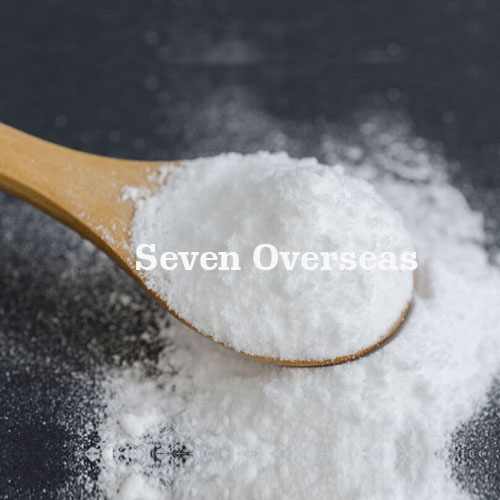Sodium bicarbonate or sodium hydrogen carbonate is the chemical compound with the formula NaHCO3. Sodium bicarbonate is an odorless white solid that is crystalline but often appears as a fine powder. It has a slightly salty, alkaline taste resembling that of washing soda (sodium carbonate). Sodium Bicarbonate is a versatile product used in the manufacture of a wide variety of goods in everyday use. The natural mineral form is nahcolite. Sodium bicarbonate is a component of the mineral natron and is found dissolved in many mineral springs. It is also produced artificially. It is found in baked goods, effervescent drinks and food colorants.
Most sodium bicarbonate is manufactured by dissolving sodium carbonate (soda ash) in water and then bubbling carbon dioxide (CO2) through the solution to form sodium bicarbonate crystals. Once the sodium bicarbonate crystals reach an adequate size, the solution is centrifuged and the sodium bicarbonate is dried and packaged.
Characteristics of sodium bicarbonate are as follows:
- Soluble in water
- Slightly soluble in alcohol
- Slightly abrasive
- Fungistatic
- Slight alkaline taste
- Non-flammable
Sodium Bicarbonate is among the food additives encoded by European Union, identified by the initials E 500. Since it has long been known and is widely used, the salt has many related names such as baking soda, bread soda, cooking soda, and bicarbonate of soda. In colloquial usage, its name is sometimes shortened to sodium bicarb, bicarb soda, simply bicarb, or even bica.
Baking soda (Sodium Bicarbonate) is used primarily in animal feed as a rumen buffer (digestive aid) or as a chemical leavening agent in baking (an alternative to yeast in making baked goods rise). When Baking Soda decomposes, carbon dioxide is produced, and this gas produces bubbles in the food that make it “lighter” (less dense). For instance, baking soda is often used in baking cakes, in order to make them “rise” as they are cooked. Baking soda makes a perfect stand-in for many personal care, cleaning, and deodorizing products. It is inexpensive, free of toxic chemicals, versatile, and effective.
Sodium bicarbonate helps regulate pH — keeping a substance neither too acidic nor too alkaline. When baking soda comes in contact with either an acidic or an alkaline substance, its natural effect is to neutralize that pH. Beyond that, baking soda has the ability to retard further changes in the pH balance, known as buffering. Other uses include detergents and cleaning products, water softening agents and pH adjustment. More highly purified sodium bicarbonate is used in food and pharmaceutical applications
Used throughout Industry, sodium bicarbonate buffers, neutralizes, provides a source of CO2, and acts as a catalyst in multiple processes. In the drilling industry, sodium bicarbonate is used to chemically treat drilling mud when it becomes contaminated with calcium ions from cement or lime. Sodium bicarbonate reacts with calcium ions to produce an inert calcium precipitate that can be removed from the system.
Fire extinguishers use sodium bicarbonate to smother the flames. Dry chemical extinguishers often contain a fine grade of sodium bicarbonate. The sodium bicarbonate decomposes in the high temperatures and releases carbon dioxide. The carbon dioxide in turn reduces the oxygen supply available to the fire, eliminating it.
Based on form, the sodium bicarbonate market is segregated into crystal/powdered crystal, liquid and slurry. Among these, crystal form sodium bicarbonate was valued over USD 1 billion in 2018 and will likely grow at a significant rate by 2025. The product is usually used as a buffering agent, systemic alkalizer, topical cleansing solutions and an electrolyte replenisher. Slurry form sodium bicarbonate will witness significant growth with more than 3.5% CAGR in future. The segment is majorly driven by increasing application in pharmaceutical and industrial in the abrasives cleaning part.
Beroil Energy Group is able to supply sodium bicarbonate food grade and sodium bicarbonate feed grade at a competitive rate.







